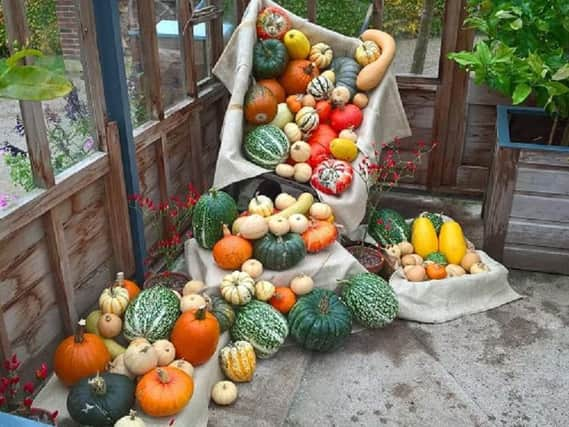Fruits have been harvested and all is safely gathered in


This week’s topic is Harvest Fruits by Paul Cook, Curator at RHS Garden Harlow Carr
Picking fruit or vegetables grown in your own garden is one of life’s great pleasures. The road to a good harvest though is not always straightforward with weather, pests and diseases always providing a challenge.
Advertisement
Hide AdAdvertisement
Hide AdThe productive garden at Harlow Carr is a mix of fruit, vegetables, herbs and flowers demonstrating old and new varieties suited to our conditions.
Raised beds have been built to lift the soil above the cold wet clay and the vegetable crops are changed and rotated to stop pests and diseases getting hold.
At this time of the year we are celebrating the harvest fruits, the pumpkins and gourds are drying in the greenhouse accompanied by a sprinkling of chilli plants and before the next storm hits us all the apples and pears will be brought undercover.
Over the next few years we will be adding new apples to our collection and showing different methods of training them to show how versatile they can be in our gardens.
Advertisement
Hide AdAdvertisement
Hide AdThe Bramley apple is a great example and is almost exclusively a British variety.
The first ‘Bramley’s Seedling’ tree grew from pips planted by Mary Ann Brailsford when she was a young girl in her garden in Southwell, Nottinghamshire, UK in 1809.
The tree in the garden was later included in the purchase of the cottage by a local butcher, Matthew Bramley in 1846.
In 1856, a local nurseryman, Henry Merryweather asked if he could take cuttings from the tree and start to sell the apples. Bramley agreed but insisted that the apples should bear his name.
Advertisement
Hide AdAdvertisement
Hide AdOn October 31 1862, the first recorded sale of a Bramley was made by Merryweather’s nursery and On 6 December 1876, the Bramley was highly commended at the Royal Horticultural Society’s Fruit Committee exhibition.
In 1900, the original tree was knocked over during violent storms; it survived, and is still bearing fruit two centuries after it was planted - however it was reported in 2016 that the tree was suffering from a fungal infection and may be dying.
The disease is Honey Fungus, a species of Armillaria fungi that causes widespread damage in gardens.
Honey Fungus is on the RHS top 10 list of common diseases reported through the advisory service.
Advertisement
Hide AdAdvertisement
Hide Ad‘Bramley’s Seedling’ apple trees are large, vigorous, spreading and long-lived.
They tolerate some shade. The apples are very large, two or three times the weight of a typical dessert apple.
They are flat with a vivid green skin which becomes red on the side which receives direct sunlight.
The tree is resistant to apple scab and mildew and does best when grown as a standard in somewhat heavy clay soil.
Advertisement
Hide AdAdvertisement
Hide AdIt is a heavy fruit bearer, but can sometimes crop heavily one year then take a rest the following year.
It needs a pollinator but cannot pollinate in return, so it is normally grown with two other varieties of apple or ornamental Malus for pollination.
It has won many awards and currently holds the Royal Horticultural Society’s Award of Garden Merit.
Plants produced from the still-surviving (then 180-year-old) tree by tissue culture in 1990 have proved to be much more compact and free-branching than the widely available commercial stock.
Advertisement
Hide AdAdvertisement
Hide AdThe cloning work was done by scientists at the University of Nottingham and Twelve of the cloned trees now grow in the University grounds; one was also planted beside the old tree at Southwell.
Extra plants have been distributed to gardens around the country and Harlow Carr now has one of these grafted plants so look out for this as it matures in the garden.
For more information go to www.rhs.org.uk/harlowcar